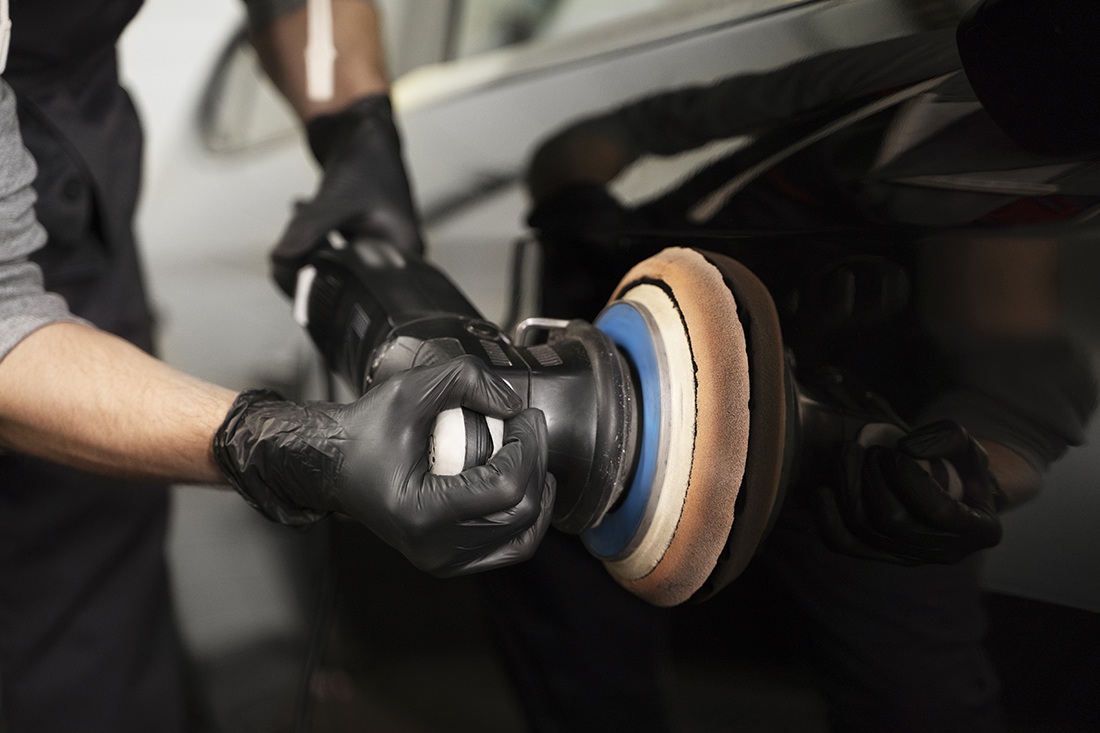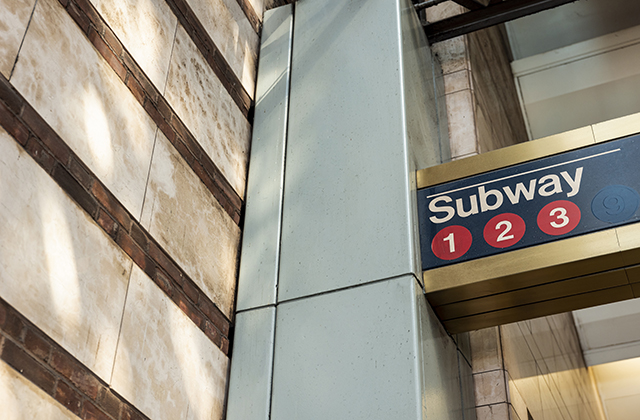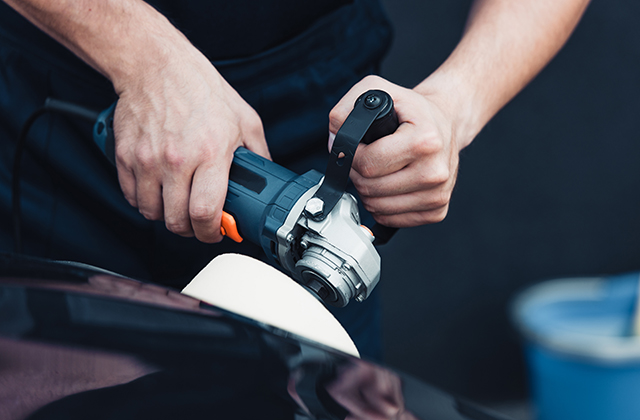Introduction
When it comes to maintaining the appearance of your car, one aspect that can significantly enhance its overall look is car polishing. Not only does it bring a brilliant shine to your vehicle, but it also provides protection against environmental elements and increases its resale value. In this article, we will explore the essential tips and techniques for better car polishing, ensuring your car’s shine game is at its peak level.
Importance of Car Polishing
Car polishing is not just about achieving a glossy finish; it offers several benefits that go beyond aesthetics. Firstly, it helps protect your car’s paint from environmental damage, such as UV rays, acid rain, and pollutants. By creating a barrier on the paint surface, polishing acts as a shield against these harmful elements, preventing premature fading or oxidation.
Secondly, car polishing can significantly improve the resale value of your vehicle. Potential buyers are more likely to be attracted to a car that looks well-maintained and has a sleek, polished exterior. It gives the impression that the car has been cared for and is in good condition. Even your car is very sleek a da polisher can manage it without damaging your paint.
Choosing the Right Polishing Products
Before diving into the polishing process, it’s crucial to select the appropriate products for your car. Understanding the differences between polish, wax, and sealant is essential.
Polish is designed to remove imperfections and restore the paint’s shine. It contains abrasive particles that help smooth out scratches, swirl marks, and other blemishes. Wax, on the other hand, is a protective layer that provides a glossy finish and shields the paint from environmental damage. Sealant is a synthetic product that offers long-lasting protection and durability.
When choosing polishing products, consider your car’s paint type and condition. Different paints may require specific products, such as clear coat-safe polish for modern cars or products specifically formulated for older vehicles. Research reputable brands known for producing high-quality polishing products that deliver optimal results.
Preparing Your Car for Polishing
Proper preparation is key to achieving a flawless finish. Start by washing your car thoroughly to remove any dirt, dust, or debris that may cause scratches during the polishing process. Use a mild car wash soap, a soft sponge or microfiber cloth, and rinse with clean water.
After washing, inspect the paint for scratches, swirl marks, or other imperfections. If necessary, use a clay bar to remove embedded contaminants that regular washing cannot eliminate. It will leave the surface smooth and ready for polishing.
Additionally, consider masking off sensitive areas like rubber trim, plastic parts, and chrome accents to protect them from accidental polish splatter or damage during the polishing process.
Step-by-Step Car Polishing Guide
To achieve the best results, follow this step-by-step guide for car polishing:
- Start with a test spot: Choose a small, inconspicuous area on your car’s surface to test the polish. This allows you to assess its effectiveness and ensure it doesn’t cause any adverse reactions.
- Apply the polish: Put a small amount of polish onto an applicator pad. Begin working in a back-and-forth or circular motion, applying even pressure. Start with a low speed if using a machine polisher.
- Use a dual-action polisher: For larger areas, a dual-action polisher can make the process more efficient and effective. It provides better control and minimizes the risk of overheating or damaging the paint.
- Work in sections: Divide the car into manageable sections, such as the hood, roof, doors, and trunk. Focus on one section at a time to ensure thorough coverage and consistent results.
- Apply consistent pressure and speed: Whether using a machine polisher or hand application, maintain a steady pressure and speed. Avoid applying excessive pressure, as it can lead to uneven results or damage the paint.
- Check the progress: Periodically stop and inspect the area you’re working on. Look for improvements in the paint’s condition, such as the reduction of swirl marks or scratches. Make necessary adjustments if needed.
- Remove excess polish: Once you’re satisfied with the results, use a clean microfiber cloth to remove any excess polish. Wipe in a gentle, circular motion to ensure a streak-free finish.
- Inspect the finish: After removing the excess polish, take a close look at the polished area under different lighting conditions. Check for any remaining imperfections or areas that may require additional attention. If necessary, repeat the polishing process to achieve the desired results.
Tips for Achieving a Professional Finish
To take your car polishing skills to the next level and achieve a professional finish, consider the following tips:
- Properly maintain the polishing pads: Clean and condition your polishing pads regularly. Remove any residual polish or debris from previous uses to ensure optimal performance.
- Use different types of pads: Different pads offer varying levels of aggressiveness and are suitable for specific needs. Experiment with foam, microfiber, or wool pads to find the one that works best for your car’s paint type and condition.
- Gradually increase polishing aggressiveness: If you encounter stubborn imperfections or deeper scratches, start with a less aggressive polish and gradually increase the aggressiveness if needed. This approach helps minimize the risk of damaging the paint.
- Apply a sealant or wax: After polishing, apply a layer of sealant or wax to protect the newly polished surface. This provides an additional barrier against environmental elements and helps maintain the shine for a longer period.
Maintaining the Polished Look
To prolong the polished look of your car and keep it in pristine condition, follow these maintenance tips:
- Regular washing and drying: Wash your car regularly using a high-quality car wash soap and a soft sponge or microfiber cloth. This removes dirt, grime, and contaminants that can dull the shine.
- Use a quick detailer: For touch-ups between washes, use a quick detailer spray. It helps remove light dust or fingerprints and restores the shine instantly.
- Park in shaded areas: Whenever possible, park your car in shaded areas to minimize sun exposure. Prolonged exposure to direct sunlight can fade the paint and diminish the polished finish.
- Reapply wax or sealant: Over time, the protective layer of wax or sealant may wear off. Follow the manufacturer’s recommendations and reapply the product periodically to maintain optimal protection.
Common Mistakes to Avoid
To ensure a successful car polishing experience, avoid the following common mistakes:
- Applying too much pressure: Excessive pressure can lead to uneven polishing results and damage the paint. Apply gentle and consistent pressure throughout the process.
- Using excessive product: Using more polish than necessary won’t yield better results. Follow the instructions provided by the manufacturer and use the recommended amount for each section.
- Overlooking proper lighting: Adequate lighting is crucial for identifying imperfections and assessing the progress of the polishing. Perform the process in a well-lit area or use additional lighting if needed.
- Neglecting safety equipment: When using machine polishers, wear appropriate safety gear, such as safety glasses and gloves, to protect yourself from any potential hazards.
- Rushing through the process: Car polishing requires time and patience. Avoid rushing through the steps, as it may result in subpar results. Take your time to achieve a professional finish.
Conclusion
By following these essential tips and techniques, you can level up your car’s shine game through effective car polishing. Remember to choose the right products, prepare your car adequately, and follow a step-by-step process for optimal results. With regular maintenance and avoiding common mistakes, your car will maintain a beautiful and polished appearance for years to come.


